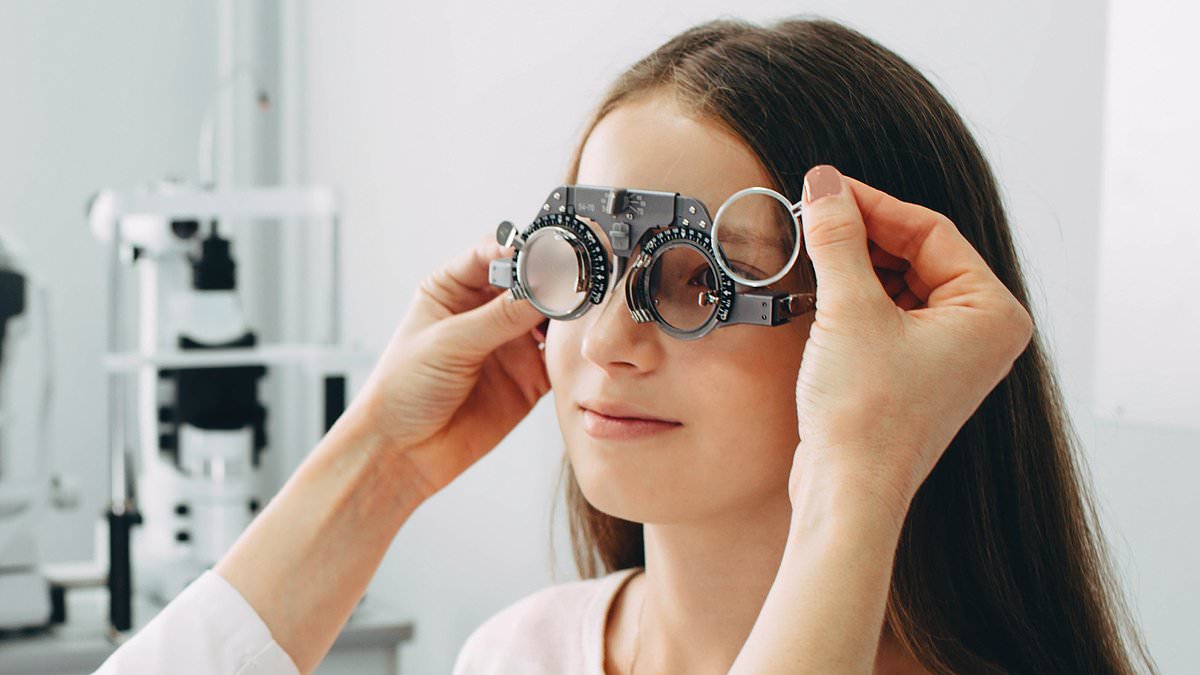Scientists are on the verge of developing a less invasive and more affordable, incision-free method to treat vision problems.
Chemists in California stumbled upon the idea that vision issues could be addressed chemically, without the need for lasers.
Their method could negate the need for LASIK, a quick laser eye surgery that reshapes the clear front part of the eye called the cornea to fix blurry vision, helping people give up glasses or contacts for nearsightedness, farsightedness, and astigmatism.
LASIK permanently removes corneal tissue, but the method designed at Occidental College and the University of California, Irvine, chemically molds the cornea. Both fix vision by correcting the cornea’s curve so that light focuses precisely on the retina.
The team used a tiny electric current to lower the cornea’s pH, making it more acidic. This loosened its collagen structure and made it moldable.
A platinum lens designed as an ideal shape was placed over the cornea. As the tissue softened, it conformed to the lens’s curve. Restoring the pH locked it into place.
They tested the power of manipulating pH and fitting the plate in rabbit eyeballs in saline solution. The eyes consistently conformed to the plate, maintaining their shape 12 out of 12 times, and even showed signs of eliminating nearsightedness in two of them.
In lab tests, the team used a saline-soaked rabbit eyeball to mimic conditions in real human eyes, and applied their pH-shifting technique. All 12 eyeballs successfully conformed to the desired shape of the template and, in 10 cases, deliberately modeled to mimic nearsightedness, the corneas adjusted to correct vision.

Researchers are exploring a way to reshape the cornea without having to make any incisions through a process known as electromechanical reshaping (EMR), which involves shaping the cornea with a metal plate (stock)
Americans often treat vision problems, such as nearsightedness, farsightedness, and astigmatism, without surgery. Roughly 167 million people wear prescription eyeglasses, while 45 million use contact lenses.
A healthy eye has a white outer part (sclera), clear front surface (cornea), and properly functioning internal structures that focus light perfectly on the retina.
When the cornea is correctly curved, light bends precisely onto the retina for sharp vision.
In impaired vision, such as nearsightedness, the cornea is too steep or flat, causing light to focus in front of or behind the retina instead.
Reshaping the cornea through LASIK adjusts the cornea's curvature, which allows light to hit the retina properly and restore clear focus.
LASIK is generally for those who want to do away with their eyeglasses and contact lenses.
While the laser surgery is overall safe, it is not risk-free. Common short-term side effects include dry eyes, glare, especially at night, and rare complications like still needing glasses, healing issues with the corneal flap or corneal weakening over time, leading to lasting vision impairment.
Most issues resolve, but some may need enhancement surgery or have lasting effects. Not everyone qualifies. Surgeons screen for thin corneas or other risk factors first.

LASIK is mostly safe but has risks, including dry eyes, night glare, and rare complications like needing glasses later, flap issues, or corneal weakening
Now, researchers are exploring a way to reshape the cornea without having to make any incisions through a process known as electromechanical reshaping (EMR).
‘The whole effect was discovered by accident,’ said Brian Wong, a professor and surgeon at the University of California, Irvine.
‘I was looking at living tissues as moldable materials and discovered this whole process of chemical modification.’
Collagen-rich tissues, including corneas, rely on magnetic-like attractions between charged particles to hold their shape.
Read More
Surgeon reveals 3 common medical procedures she'd never recommend

Introducing a tiny electric current lowers the pH of the gel-like fluid surrounding its collagen fibers, turning rigid tissue temporarily soft.
While the rabbit eye tissue was soft, Dr Wong and his partner, Dr Michael Hill, a professor of chemistry at Occidental College, applied the perfectly-shaped platinum plate to mold the cornea into a new shape. It did so in about a minute.
When they restored pH, those attractions tightened, freezing the tissue in its new form.
The work is still in its early stages. It is expected to begin a long process of detailed and precise studies in living animals, not just eyeballs in saline.
The team will next explore how well EMR can treat common vision issues like nearsightedness, farsightedness and astigmatism.
Dr Hill said: ‘There's a long road between what we've done and the clinic.
‘But, if we get there, this technique is widely applicable, vastly cheaper and potentially even reversible.’
The team’s findings were presented at the fall meeting of the American Chemical Society this week.
